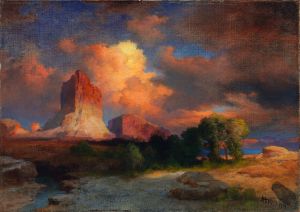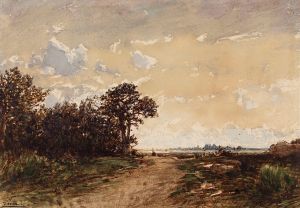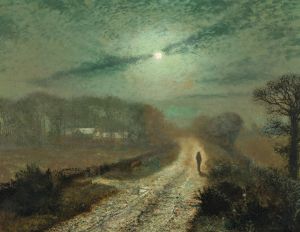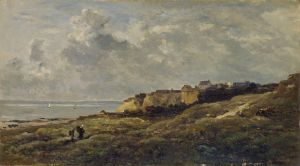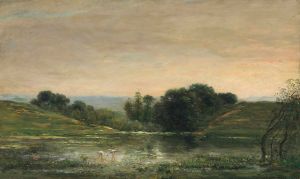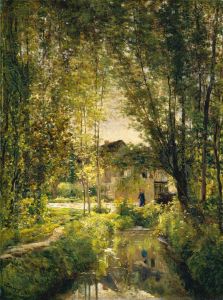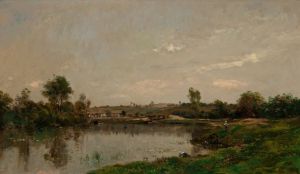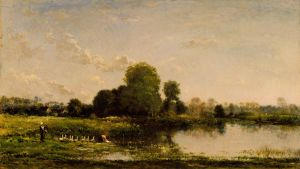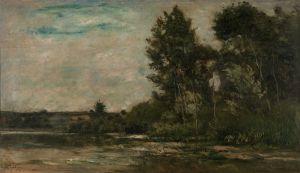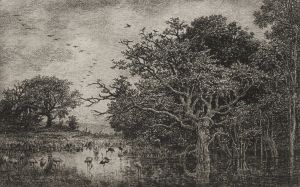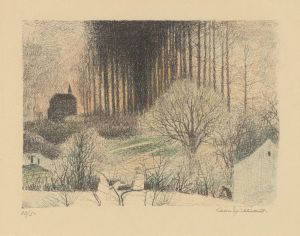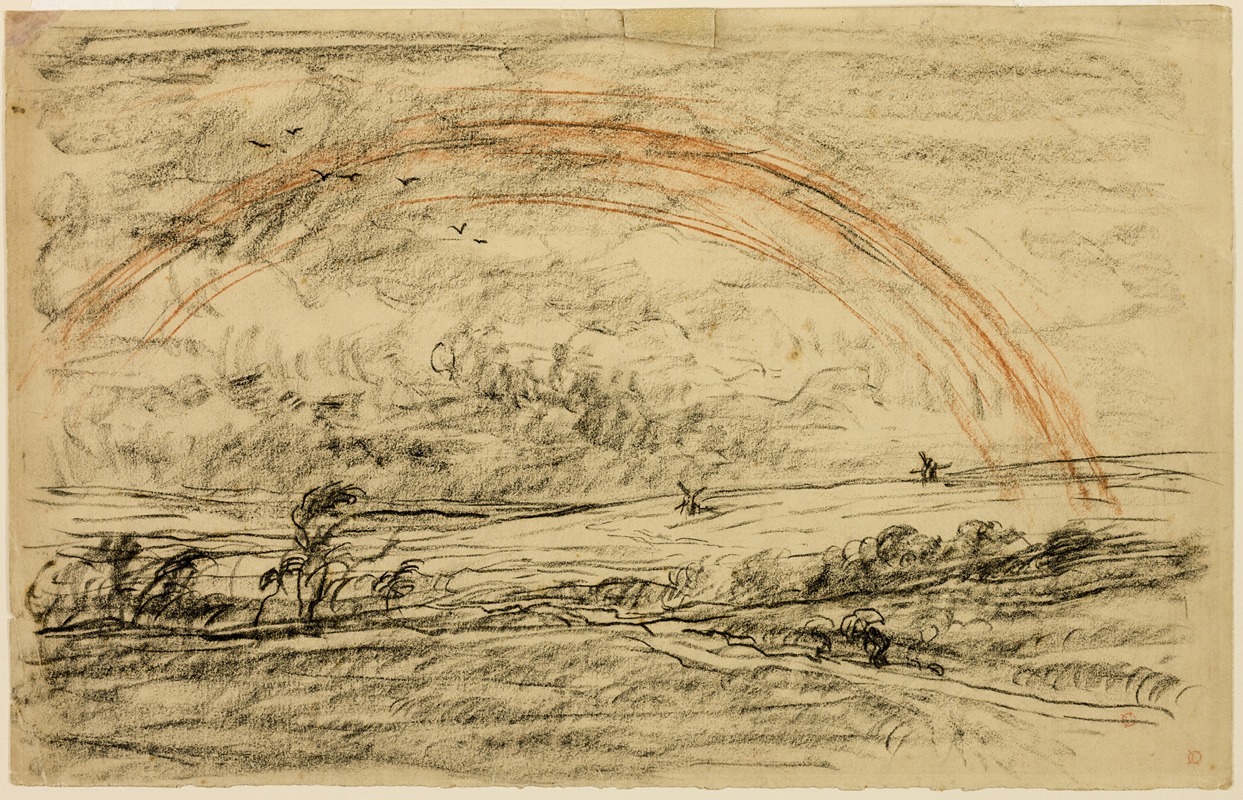
Landscape with a Rainbow
A hand-painted replica of Charles François Daubigny’s masterpiece Landscape with a Rainbow, meticulously crafted by professional artists to capture the true essence of the original. Each piece is created with museum-quality canvas and rare mineral pigments, carefully painted by experienced artists with delicate brushstrokes and rich, layered colors to perfectly recreate the texture of the original artwork. Unlike machine-printed reproductions, this hand-painted version brings the painting to life, infused with the artist’s emotions and skill in every stroke. Whether for personal collection or home decoration, it instantly elevates the artistic atmosphere of any space.
"Landscape with a Rainbow" is a painting by the French artist Charles François Daubigny, a prominent figure in the Barbizon School of painters. Daubigny was born in Paris on February 15, 1817, and became known for his innovative approach to landscape painting, which significantly influenced the development of Impressionism.
The painting "Landscape with a Rainbow" exemplifies Daubigny's mastery in capturing the transient effects of light and atmosphere in nature. This work is believed to have been created around the mid-19th century, during a period when Daubigny was particularly focused on plein air painting, a technique that involves painting outdoors to directly capture the scene before the artist.
In "Landscape with a Rainbow," Daubigny presents a serene rural scene, characterized by a lush, verdant landscape under a dramatic sky. The rainbow, a central element of the composition, arches gracefully across the sky, adding a sense of hope and tranquility to the scene. The use of light and shadow in the painting is particularly notable, as Daubigny skillfully renders the diffused light of the rainbow and the contrasting darker clouds, creating a dynamic and atmospheric effect.
Daubigny's technique in this painting reflects his deep understanding of natural light and his ability to convey the mood of the landscape. His brushwork is both delicate and expressive, capturing the textures of the foliage and the softness of the sky. The composition is balanced, with the rainbow serving as a focal point that draws the viewer's eye across the canvas.
The Barbizon School, to which Daubigny belonged, was a group of artists who settled in the village of Barbizon near the Forest of Fontainebleau in France. They were pioneers in the movement towards realism in art, focusing on painting landscapes and scenes of rural life with a directness and honesty that was revolutionary at the time. Daubigny, along with other members of the Barbizon School such as Jean-Baptiste-Camille Corot and Théodore Rousseau, sought to break away from the formalism of academic painting and instead depict the natural world with authenticity and emotion.
"Landscape with a Rainbow" is a testament to Daubigny's contribution to the evolution of landscape painting. His work laid the groundwork for the Impressionists, who would further explore the effects of light and color in their own revolutionary ways. Daubigny's influence is evident in the works of artists like Claude Monet, who admired and was inspired by Daubigny's approach to capturing the essence of the natural world.
Today, "Landscape with a Rainbow" is celebrated as an important work in the history of art, showcasing Daubigny's skill and his role in the transition from traditional landscape painting to the more modern approaches that would follow. The painting remains a beautiful example of how art can capture the fleeting beauty of nature and evoke a sense of peace and wonder in the viewer.





